My
List |
Addition Date
|
Target
|
Mission
|
Instrument
|
Size
|

|
1999-11-30 |
Black Hole
|
|
|
925x1197x3 |

|
-
PIA04206:
-
Black Hole Simulation
Full Resolution:
TIFF
(3.325 MB)
JPEG
(106.6 kB)
|

|
1999-12-01 |
Protostellar Disk L1157
|
|
Owens Valley Millimeter Array
|
787x1019x3 |

|
-
PIA04211:
-
Protostellar Disk L1157
Full Resolution:
TIFF
(2.409 MB)
JPEG
(34.08 kB)
|

|
2004-03-15 |
Sedna
|
|
Samuel Oschin Telescope
|
640x480x5 |
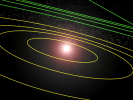
|
-
PIA05565:
-
Sedna Orbit Animation

Full Resolution:
|

|
2004-03-15 |
Sedna
|
|
Samuel Oschin Telescope
|
2000x1500x3 |
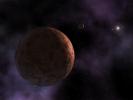
|
-
PIA05566:
-
Artist's Concept of Sedna
Full Resolution:
TIFF
(4.921 MB)
JPEG
(103.1 kB)
|

|
2004-03-15 |
Sedna
|
|
Samuel Oschin Telescope
|
3000x2400x3 |
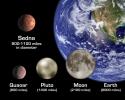
|
-
PIA05567:
-
Sedna Size Comparisons (Artist's Concept)
Full Resolution:
TIFF
(11.78 MB)
JPEG
(695 kB)
|

|
2004-03-15 |
Sedna
|
|
Samuel Oschin Telescope
|
2480x900x3 |
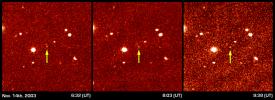
|
-
PIA05568:
-
Sedna Discovery Image
Full Resolution:
TIFF
(2.333 MB)
JPEG
(564.4 kB)
|

|
2004-03-15 |
Sedna
|
|
Samuel Oschin Telescope
|
2499x2499x3 |
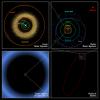
|
-
PIA05569:
-
Sedna Orbit Comparisons
Full Resolution:
TIFF
(2.507 MB)
JPEG
(554.8 kB)
|

|
2010-02-03 |
HD 189733
|
|
|
1088x745x3 |
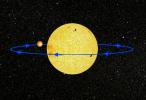
|
-
PIA12505:
-
Probing Exoplanets From the Ground (Artist Concept)
Full Resolution:
TIFF
(2.435 MB)
JPEG
(122.6 kB)
|

|
2009-05-28 |
VB 10
|
|
|
2400x3000x3 |

|
-
PIA12014:
-
Bizarre Planetary System (Artist Concept)
Full Resolution:
TIFF
(21.62 MB)
JPEG
(294.7 kB)
|

|
2009-05-28 |
VB 10
|
|
|
3000x2400x3 |
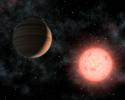
|
-
PIA12015:
-
A Planet as Big as its Star (Artist Concept)
Full Resolution:
TIFF
(21.6 MB)
JPEG
(416 kB)
|

|
2010-04-14 |
|
|
Hale Telescope
|
1024x768x3 |
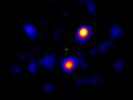
|
-
PIA13034:
-
Portrait of Distant Planets
Full Resolution:
TIFF
(2.363 MB)
JPEG
(21.36 kB)
|

|
2010-07-14 |
|
|
|
4000x2666x3 |
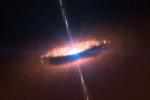
|
-
PIA13275:
-
Disk Around a Massive Baby Star (Artist's Concept)
Full Resolution:
TIFF
(31.99 MB)
JPEG
(690 kB)
|

|
2012-07-09 |
|
|
Adaptive Optics System and Coronagraph
|
1123x563x3 |
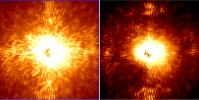
|
-
PIA15807:
-
Using 'Dark Holes' to Spot Planets
Full Resolution:
TIFF
(1.898 MB)
JPEG
(105.7 kB)
|

|
2012-08-31 |
|
|
|
1259x944x3 |
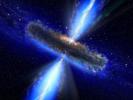
|
-
PIA16114:
-
Quasar Drenched in Water Vapor (Artist's Concept)
Full Resolution:
TIFF
(3.567 MB)
JPEG
(154.9 kB)
|

|
2012-09-15 |
|
|
|
2400x2400x3 |
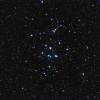
|
-
PIA15801:
-
Bees in the Beehive
Full Resolution:
TIFF
(17.29 MB)
JPEG
(469.1 kB)
|

|
2012-09-15 |
|
|
|
4800x2700x3 |
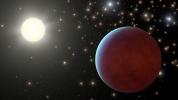
|
-
PIA15802:
-
Starry Starry Skies (Artist's Concept)
Full Resolution:
TIFF
(38.9 MB)
JPEG
(405.3 kB)
|

|
2012-09-18 |
|
|
|
1439x1080x3 |

|
-
PIA15805:
-
Ice from the Solar System's Edge (Artist's Concept)
Full Resolution:
TIFF
(4.664 MB)
JPEG
(176.6 kB)
|

|
2013-02-07 |
|
|
|
934x935x3 |
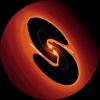
|
-
PIA16689:
-
Artist's Impression of Pulsating Object LRLL 54361
Full Resolution:
TIFF
(2.621 MB)
JPEG
(80 kB)
|

|
2013-05-09 |
|
|
Hale Telescope
|
448x438x1 |
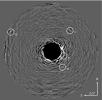
|
-
PIA17010:
-
Planetary Family Portrait
Full Resolution:
TIFF
(196.6 kB)
JPEG
(23.06 kB)
|

|
2013-05-24 |
|
|
|
899x709x3 |
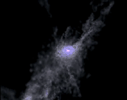
|
-
PIA17014:
-
Cosmic Swirly Straws Feed Galaxy

Full Resolution:
TIFF
(1.913 MB)
JPEG
(25.9 kB)
|

|
2011-03-29 |
Kuiper Belt
|
|
|
2100x1995x3 |
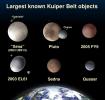
|
-
PIA17308:
-
Transneptunian Object Sizes (Artist's Concept)
Full Resolution:
TIFF
(12.57 MB)
JPEG
(293.9 kB)
|

|
2014-04-10 |
Exoplanet
|
|
|
4200x2363x3 |
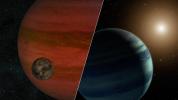
|
-
PIA17998:
-
Moon or Planet? The 'Exomoon Hunt' Continues (Artist's Concept)
Full Resolution:
TIFF
(29.79 MB)
JPEG
(934.1 kB)
|

|
2014-05-01 |
Ganymede
|
|
|
3300x2550x3 |
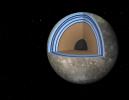
|
-
PIA18005:
-
Possible "Moonwich" of Ice and Oceans on Ganymede (Artist's Concept)
Full Resolution:
TIFF
(25.26 MB)
JPEG
(514.5 kB)
|

|
2014-12-11 |
|
|
Chandra X-ray Observatory
Hubble Space Telescope
Spitzer Space Telescope
|
3600x1742x3 |
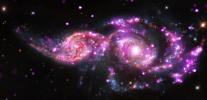
|
-
PIA18903:
-
Galactic Gathering Gives Impressive Light Display
Full Resolution:
TIFF
(18.82 MB)
JPEG
(698.6 kB)
|

|
2015-03-04 |
|
|
|
3300x2550x3 |
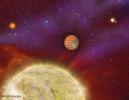
|
-
PIA18926:
-
Planet With Four Stars (Artist's Concept)
Full Resolution:
TIFF
(25.26 MB)
JPEG
(1.486 MB)
|

|
2015-03-04 |
|
|
|
1160x876x3 |
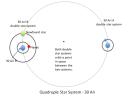
|
-
PIA18927:
-
Double Date: Two Pairs of Stars in One System
Full Resolution:
TIFF
(3.05 MB)
JPEG
(57.54 kB)
|

|
2016-03-03 |
|
|
CHIMERA
|
1007x1020x3 |

|
-
PIA20347:
-
Versatile Instrument to Scout for Kuiper Belt Objects
Full Resolution:
TIFF
(3.083 MB)
JPEG
(105.7 kB)
|

|
2017-01-05 |
|
|
|
4096x2560x3 |
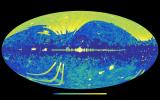
|
-
PIA21084:
-
NED Catalog Sky Source Map
Full Resolution:
TIFF
(14.31 MB)
JPEG
(1.889 MB)
|

|
2017-06-05 |
KELT-9b
|
|
|
5120x2880x3 |
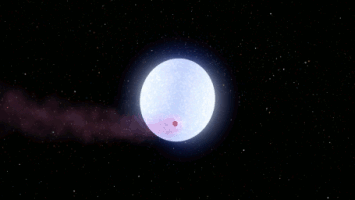
|
-
PIA21472:
-
Hottest Hot Jupiter Animation (Artist's Concept)

Full Resolution:
TIFF
(23.38 MB)
JPEG
(527.1 kB)
|

|
2017-10-11 |
|
|
|
2048x1152x3 |
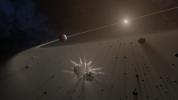
|
-
PIA22082:
-
Giant Exoplanet and Debris Disk (Artist's Concept)
Full Resolution:
TIFF
(3.949 MB)
JPEG
(77.56 kB)
|

|
2017-11-29 |
|
|
|
2700x2282x3 |
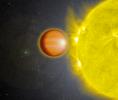
|
-
PIA22087:
-
WASP-18b (Artist's Concept)
Full Resolution:
TIFF
(14.95 MB)
JPEG
(515.9 kB)
|

|
2018-06-15 |
|
|
|
3816x2160x3 |
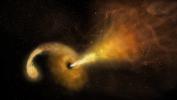
|
-
PIA22355:
-
Black Hole vs. Star: A Tidal Disruption Event (Artist's Concept)
Full Resolution:
TIFF
(15.61 MB)
JPEG
(451.1 kB)
|

|
2018-06-28 |
|
|
|
3200x1800x3 |
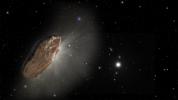
|
-
PIA22357:
-
'Oumuamua Races Toward Outskirts of Solar System (Artist's Concept)
Full Resolution:
TIFF
(5.281 MB)
JPEG
(296.7 kB)
|

|
2018-12-18 |
|
|
|
4534x2550x3 |
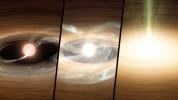
|
-
PIA22917:
-
FU Orionis Disk Illustration
Full Resolution:
TIFF
(23.44 MB)
JPEG
(634.7 kB)
|

|
2019-04-29 |
Asteroid
|
|
|
1220x700x3 |
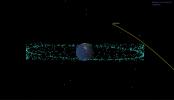
|
-
PIA23195:
-
Asteroid Apophis
Full Resolution:
TIFF
(264.3 kB)
JPEG
(40.1 kB)
|

|
2019-09-12 |
|
|
Canada-France-Hawaii Telescope
|
705x645x1 |
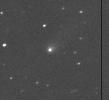
|
-
PIA23462:
-
Comet C/2019 Q4
Full Resolution:
TIFF
(455.4 kB)
JPEG
(131.8 kB)
|

|
2019-12-05 |
Asteroid
|
|
|
535x398x3 |
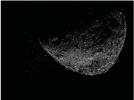
|
-
PIA23554:
-
Asteroid Bennu Particles
Full Resolution:
TIFF
(201.2 kB)
JPEG
(24.09 kB)
|

|
2019-12-05 |
Asteroid
|
|
|
2532x1417x3 |
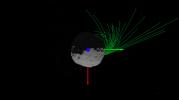
|
-
PIA23555:
-
Bennu Particles (Animation)
Full Resolution:
TIFF
(1.12 MB)
JPEG
(116 kB)
|

|
2020-01-08 |
|
|
|
4096x2160x3 |
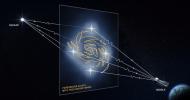
|
-
PIA23641:
-
Gravitational Lensing Graphic
Full Resolution:
TIFF
(13.46 MB)
JPEG
(750.8 kB)
|

|
2020-04-09 |
|
|
|
4800x2700x3 |
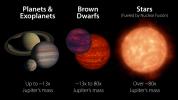
|
-
PIA23685:
-
What is a Brown Dwarf?
Full Resolution:
TIFF
(11.43 MB)
JPEG
(523.7 kB)
|

|
2020-08-18 |
Asteroid
|
|
|
1841x1033x3 |
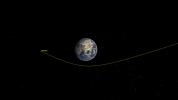
|
-
PIA24037:
-
Asteroid 2020 QG Zips Around the Earth (Illustration)
Full Resolution:
TIFF
(518.8 kB)
JPEG
(64.57 kB)
|

|
2020-08-18 |
Asteroid
|
|
ZTF
|
1814x1298x3 |
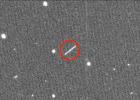
|
-
PIA24038:
-
Asteroid 2020 QG as Seen Through ZTF Telescope
Full Resolution:
TIFF
(3.107 MB)
JPEG
(364.5 kB)
|

|
2020-10-01 |
|
|
|
3840x2160x3 |
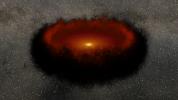
|
-
PIA23866:
-
Echo Mapping in a Black Hole Accretion Disk and Torus (Animation)
Full Resolution:
TIFF
(13.3 MB)
JPEG
(621.5 kB)
|

|
2021-01-22 |
|
|
|
3840x2160x3 |
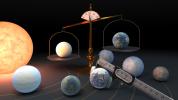
|
-
PIA23870:
-
Measuring the Masses and Diameters of the TRAPPIST-1 Planets
Full Resolution:
TIFF
(9.793 MB)
JPEG
(417.9 kB)
|

|
2021-01-22 |
|
|
|
4800x2700x3 |
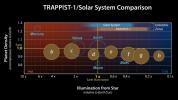
|
-
PIA24371:
-
Comparison of TRAPPIST-1 to the Solar System
Full Resolution:
TIFF
(6.209 MB)
JPEG
(634.2 kB)
|

|
2021-01-22 |
|
|
|
3840x2160x3 |
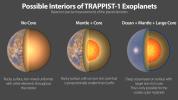
|
-
PIA24372:
-
Possible Interiors of the TRAPPIST-1 Exoplanets
Full Resolution:
TIFF
(8.19 MB)
JPEG
(589.7 kB)
|

|
2021-01-22 |
|
|
|
6000x3500x3 |
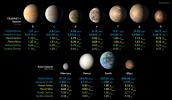
|
-
PIA24373:
-
TRAPPIST-1 and Solar System Planet Stats
Full Resolution:
TIFF
(11.5 MB)
JPEG
(1.115 MB)
|

|
2021-03-09 |
Sky
|
|
|
1200x1707x3 |

|
-
PIA24432:
-
Zodiacal Light
Full Resolution:
TIFF
(4.453 MB)
JPEG
(217 kB)
|

|
2021-03-26 |
Asteroid
|
|
Deep Space Network
|
2999x1300x1 |
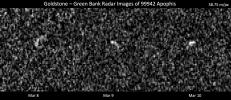
|
-
PIA24168:
-
Radar Observations of Asteroid 99942 Apophis
Full Resolution:
TIFF
(1.73 MB)
JPEG
(419.4 kB)
|

|
2021-04-05 |
Asteroid
|
|
Deep Space Network
|
1254x958x1 |
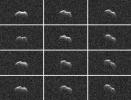
|
-
PIA24561:
-
Goldstone Radar Observations of Asteroid 2001 FO32
Full Resolution:
TIFF
(916.4 kB)
JPEG
(154.5 kB)
|

|
2021-04-07 |
|
|
|
5120x2880x3 |
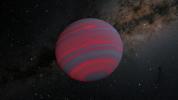
|
-
PIA24380:
-
A Swiftly Rotating Brown Dwarf (Illustration)
Full Resolution:
TIFF
(22.98 MB)
JPEG
(659.5 kB)
|

|
2021-04-07 |
|
|
|
3814x1856x3 |
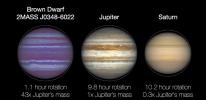
|
-
PIA24376:
-
Flattening of Brown Dwarf, Jupiter and Saturn (Illustration)
Full Resolution:
TIFF
(6.284 MB)
JPEG
(305.6 kB)
|

|
2021-04-21 |
Milky Way
|
|
|
3840x2160x3 |
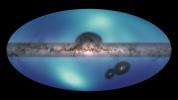
|
-
PIA24571:
-
Star Map of the Milky Way's Outer Halo
Full Resolution:
TIFF
(16.93 MB)
JPEG
(1.124 MB)
|

|
2021-08-17 |
|
|
|
4800x2700x3 |
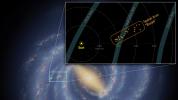
|
-
PIA24576:
-
A Break in the Milky Way's Sagittarius Arm
Full Resolution:
TIFF
(20.62 MB)
JPEG
(897.7 kB)
|

|
2022-03-15 |
Asteroid
|
|
|
1440x830x3 |
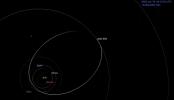
|
-
PIA24568:
-
Animation of Asteroid 2022 EB5's Orbit Before Hitting Earth's Atmosphere
Full Resolution:
TIFF
(248.9 kB)
JPEG
(41.43 kB)
|

|
2022-10-12 |
Star
|
|
|
3840x2160x3 |
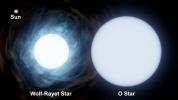
|
-
PIA25431:
-
Comparing Sizes: the Sun and WR 140
Full Resolution:
TIFF
(14.52 MB)
JPEG
(254.8 kB)
|

|
2023-12-22 |
|
|
James Webb Space Telescope
IRAS
Spitzer Space Telescope
|
2686x1503x3 |
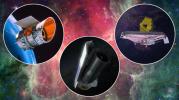
|
-
PIA25790:
-
Three of NASA's Infrared Telescopes
Full Resolution:
TIFF
(12.05 MB)
JPEG
(317.2 kB)
|

|
2023-12-22 |
|
|
IRAS
|
1200x675x3 |
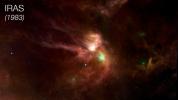
|
-
PIA26271:
-
Rho Ophiuchi Imaged by IRAS
Full Resolution:
TIFF
(1.835 MB)
JPEG
(42.5 kB)
|

|
2024-10-02 |
Asteroid
|
|
ATLAS
|
1367x970x3 |
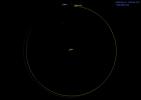
|
-
PIA26452:
-
Asteroid 2024 PT5's Orbit Around the Sun (Animation)
Full Resolution:
TIFF
(195.3 kB)
JPEG
(38.41 kB)
|

|
2005-11-29 |
55 Cancri
|
|
|
3000x2400x3 |
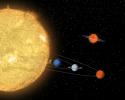
|
-
PIA03604:
-
Itsy Bitsy Solar System (Artist's Concept)
Full Resolution:
TIFF
(21.6 MB)
JPEG
(393.8 kB)
|

|
2000-02-11 |
Masursky
|
Cassini-Huygens
|
ISS - Narrow Angle
|
220x220x1 |
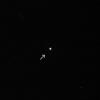
|
-
PIA02449:
-
Masursky
Full Resolution:
TIFF
(13.38 kB)
JPEG
(1.381 kB)
|

|
2002-07-23 |
HD339457
|
Cassini-Huygens
|
ISS - Narrow Angle
|
505x101x1 |

|
-
PIA03477:
Reconditioning of Cassini Narrow-Angle Camera
Full Resolution:
TIFF
(17.35 kB)
JPEG
(3.701 kB)
|

|
2005-12-22 |
Carina Nebula
|
Cassini-Huygens
|
ISS - Wide Angle
|
1020x1020x1 |
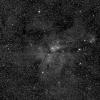
|
-
PIA07773:
-
Cassini's Galactic Aspirations
Full Resolution:
TIFF
(1.042 MB)
JPEG
(309.2 kB)
|

|
2006-09-06 |
Pleiades
|
Cassini-Huygens
|
ISS - Wide Angle
|
687x559x1 |
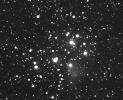
|
-
PIA08260:
-
The Seven Sisters
Full Resolution:
TIFF
(384.7 kB)
JPEG
(63.42 kB)
|

|
2009-10-15 |
Sol (our sun)
|
Cassini-Huygens
|
MIMI
|
1280x720x3 |
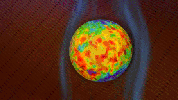
|
-
PIA12310:
-
The Bubble of Our Solar System

Full Resolution:
TIFF
(2.768 MB)
JPEG
(62.85 kB)
|

|
2009-04-30 |
Pleiades
|
Cassini-Huygens
|
ISS - Wide Angle
|
1014x1014x1 |
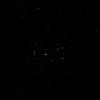
|
-
PIA11482:
-
Scoping the Sisters
Full Resolution:
TIFF
(1.029 MB)
JPEG
(26.22 kB)
|

|
2009-11-20 |
Sol (our sun)
|
Cassini-Huygens
|
MIMI
|
1163x781x3 |
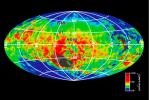
|
-
PIA12374:
-
Particles from the Heliosphere
Full Resolution:
TIFF
(2.728 MB)
JPEG
(143 kB)
|

|
2004-10-06 |
|
Chandra X-ray Observatory
|
Chandra X-ray Telescope
|
2400x2400x3 |
![The images indicate that the bubble of gas that makes up the supernova remnant appears different in various types of light. Chandra reveals the hottest gas [colored blue and colored green], which radiates in X-rays.](/thumb/PIA06908.jpg)
|
-
PIA06908:
-
Kepler's Supernova Remnant: A View from Chandra X-Ray Observatory
Full Resolution:
TIFF
(8.168 MB)
JPEG
(288.1 kB)
|

|
2007-10-25 |
|
Chandra X-ray Observatory
|
Chandra X-ray Telescope
|
5100x2550x3 |
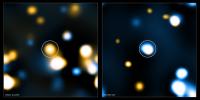
|
-
PIA10092:
-
Stacks of Light
Full Resolution:
TIFF
(39.02 MB)
JPEG
(385.4 kB)
|

|
2017-01-24 |
NGC 7331
|
Chandra X-ray Observatory
|
Chandra X-ray Telescope
|
1800x1800x3 |
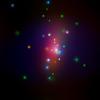
|
-
PIA21089:
-
Supernova SN 2014C (X-ray)
Full Resolution:
TIFF
(4.854 MB)
JPEG
(71.01 kB)
|

|
2016-01-07 |
|
Chandra X-ray Observatory
Herschel Space Observatory
Spitzer Space Telescope
|
Chandra X-ray Telescope
IRAC
|
1719x1718x3 |
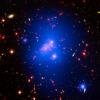
|
-
PIA20063:
-
Galaxy Cluster IDCS J1426
Full Resolution:
TIFF
(7.301 MB)
JPEG
(258.9 kB)
|

|
2009-11-10 |
|
Chandra X-ray Observatory
Hubble Space Telescope
Spitzer Space Telescope
|
IRAC
|
9725x4862x3 |
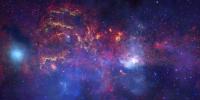
|
-
PIA12348:
-
Great Observatories' Unique Views of the Milky Way
Full Resolution:
TIFF
(141.8 MB)
JPEG
(3.839 MB)
|

|
2012-04-17 |
|
Chandra X-ray Observatory
Hubble Space Telescope
Spitzer Space Telescope
|
|
3600x2880x3 |
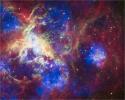
|
-
PIA14415:
-
A New View of the Tarantula Nebula
Full Resolution:
TIFF
(31.1 MB)
JPEG
(1.774 MB)
|

|
2013-04-03 |
|
Chandra X-ray Observatory
Hubble Space Telescope
Spitzer Space Telescope
|
Chandra X-ray Telescope
IRAC
Visible-Light
|
3600x3600x3 |
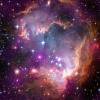
|
-
PIA16884:
-
Taken Under the 'Wing' of the Small Magellanic Cloud
Full Resolution:
TIFF
(38.89 MB)
JPEG
(1.685 MB)
|

|
2014-07-02 |
|
Chandra X-ray Observatory
Hubble Space Telescope
Spitzer Space Telescope
Very Large Array (VLA)
|
|
3600x2812x3 |
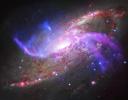
|
-
PIA18461:
-
Galactic Pyrotechnics on Display
Full Resolution:
TIFF
(30.38 MB)
JPEG
(1.396 MB)
|

|
2012-12-13 |
|
Chandra X-ray Observatory
Hubble Space Telescope
Spitzer Space Telescope
Very Large Space Telescope (VLT)
|
|
3600x3600x3 |
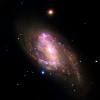
|
-
PIA15806:
-
NGC 3627: Revealing Hidden Black Holes
Full Resolution:
TIFF
(38.89 MB)
JPEG
(646 kB)
|

|
2012-11-07 |
|
Chandra X-ray Observatory
Isaac Newton Telescope
Spitzer Space Telescope
|
|
3600x3600x3 |
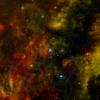
|
-
PIA16438:
-
A Nearby Stellar Cradle
Full Resolution:
TIFF
(20.2 MB)
JPEG
(1.678 MB)
|

|
2014-02-19 |
|
Chandra X-ray Observatory
NuSTAR
|
Chandra X-ray Telescope
NuSTAR
|
3000x3000x3 |
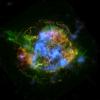
|
-
PIA17838:
-
Untangling the Remains of Cassiopeia A
Full Resolution:
TIFF
(27.01 MB)
JPEG
(350.8 kB)
|

|
2014-02-19 |
|
Chandra X-ray Observatory
NuSTAR
|
Chandra X-ray Telescope
NuSTAR
|
3072x1024x3 |
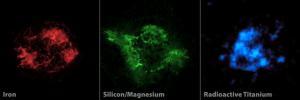
|
-
PIA17839:
-
Adding a New "Color" to Palate of Cassiopeia A Images
Full Resolution:
TIFF
(9.442 MB)
JPEG
(157.2 kB)
|

|
2014-02-19 |
|
Chandra X-ray Observatory
NuSTAR
|
Chandra X-ray Telescope
NuSTAR
|
1024x1024x3 |
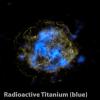
|
-
PIA17841:
-
Radioactive Core of a Dead Star
Full Resolution:
TIFF
(3.147 MB)
JPEG
(62.44 kB)
|

|
2014-02-19 |
|
Chandra X-ray Observatory
NuSTAR
|
Chandra X-ray Telescope
NuSTAR
|
2048x1024x3 |
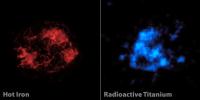
|
-
PIA17842:
-
The Case of Missing Iron in Cassiopeia A
Full Resolution:
TIFF
(6.294 MB)
JPEG
(87.83 kB)
|

|
2014-02-19 |
|
Chandra X-ray Observatory
NuSTAR
|
Chandra X-ray Telescope
NuSTAR
|
3000x2000x3 |
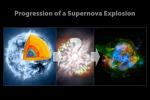
|
-
PIA17844:
-
Evolution of a Supernova
Full Resolution:
TIFF
(18.01 MB)
JPEG
(344.8 kB)
|

|
2014-02-19 |
|
Chandra X-ray Observatory
NuSTAR
|
Chandra X-ray Telescope
NuSTAR
|
3000x2400x3 |
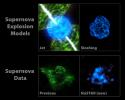
|
-
PIA17846:
-
NuSTAR Data Point to Sloshing Supernovas
Full Resolution:
TIFF
(21.61 MB)
JPEG
(378 kB)
|

|
2014-09-16 |
|
Chandra X-ray Observatory
NuSTAR
|
|
1400x1400x3 |
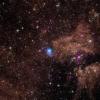
|
-
PIA18836:
-
Powerful, Pulsating Core of Star
Full Resolution:
TIFF
(5.882 MB)
JPEG
(319 kB)
|

|
2016-07-28 |
|
Chandra X-ray Observatory
NuSTAR
|
|
2500x2500x3 |
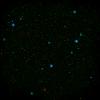
|
-
PIA20865:
-
A Black Hole 'Choir'
Full Resolution:
TIFF
(5.029 MB)
JPEG
(375.3 kB)
|

|
2017-01-07 |
NGC 1448
|
Chandra X-ray Observatory
NuSTAR
|
|
1750x1750x3 |

|
-
PIA21086:
-
Galaxy NGC 1448 with Active Galactic Nucleus
Full Resolution:
TIFF
(7.376 MB)
JPEG
(397.9 kB)
|

|
2017-01-24 |
NGC 7331
|
Chandra X-ray Observatory
SDSS
|
Chandra X-ray Telescope
|
864x864x3 |

|
-
PIA21088:
-
Supernova SN 2014C (Optical and X-Ray)
Full Resolution:
TIFF
(1.854 MB)
JPEG
(82.92 kB)
|

|
2008-10-06 |
NGC 6193
|
Chandra X-ray Observatory
Spitzer Space Telescope
|
Chandra X-ray Telescope
IRAC
|
3300x3135x3 |
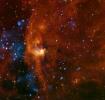
|
-
PIA11226:
-
RCW 108: Massive Young Stars Trigger Stellar Birth
Full Resolution:
TIFF
(31.04 MB)
JPEG
(524.6 kB)
|

|
2009-01-06 |
Cassiopeia A
|
Chandra X-ray Observatory
Spitzer Space Telescope
|
Chandra X-ray Telescope
IRAC
|
719x479x3 |
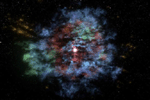
|
-
PIA11748:
-
Supernova Remnant in 3-D

Full Resolution:
TIFF
(1.035 MB)
JPEG
(36.78 kB)
|

|
2009-08-12 |
Cepheus B
|
Chandra X-ray Observatory
Spitzer Space Telescope
|
Chandra X-ray Telescope
IRAC
|
2749x3600x3 |

|
-
PIA12169:
-
Trigger-Happy Cloud
Full Resolution:
TIFF
(29.69 MB)
JPEG
(402.1 kB)
|

|
2010-03-29 |
|
Chandra X-ray Observatory
Spitzer Space Telescope
|
Chandra X-ray Telescope
IRAC
|
3600x3547x3 |
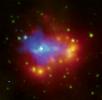
|
-
PIA12982:
-
Dusty Dead Star
Full Resolution:
TIFF
(38.31 MB)
JPEG
(303.8 kB)
|

|
2011-09-28 |
NGC 281
|
Chandra X-ray Observatory
Spitzer Space Telescope
|
Chandra X-ray Telescope
IRAC
|
3600x2719x3 |
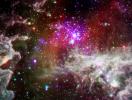
|
-
PIA14731:
-
The 'Pacman Nebula'
Full Resolution:
TIFF
(29.37 MB)
JPEG
(797.6 kB)
|

|
2011-11-16 |
|
Chandra X-ray Observatory
Spitzer Space Telescope
|
Chandra X-ray Telescope
IRAC
|
3600x3069x3 |
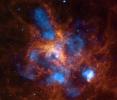
|
-
PIA15079:
-
30 Doradus: The Growing Tarantula Within
Full Resolution:
TIFF
(33.15 MB)
JPEG
(457 kB)
|

|
2014-05-07 |
|
Chandra X-ray Observatory
Spitzer Space Telescope
|
|
3600x3600x3 |
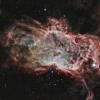
|
-
PIA18249:
-
Inside the Flame Nebula
Full Resolution:
TIFF
(38.89 MB)
JPEG
(874.9 kB)
|

|
2014-07-02 |
|
Chandra X-ray Observatory
Spitzer Space Telescope
|
|
1232x960x3 |
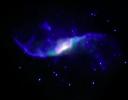
|
-
PIA18462:
-
Black Hole Jets Make Shock Waves
Full Resolution:
TIFF
(3.55 MB)
JPEG
(31.11 kB)
|

|
2015-07-02 |
|
Chandra X-ray Observatory
Spitzer Space Telescope
|
IRAC
Kitt Peak National Observatory
|
3600x3600x3 |
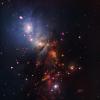
|
-
PIA19347:
-
Cosmic Sparklers
Full Resolution:
TIFF
(38.89 MB)
JPEG
(614.9 kB)
|

|
2011-10-24 |
|
Chandra X-ray Observatory
Spitzer Space Telescope
Wide-field Infrared Survey Explorer (WISE)
|
Chandra X-ray Telescope
IRAC
WISE Telescope
XMM-Newton X-ray
|
2811x2154x3 |
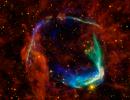
|
-
PIA14872:
-
All Eyes on Oldest Recorded Supernova
Full Resolution:
TIFF
(18.16 MB)
JPEG
(361.1 kB)
|

|
2016-07-27 |
|
Chandra X-ray Observatory
Spitzer Space Telescope
Wide-field Infrared Survey Explorer (WISE)
|
|
4534x2550x3 |
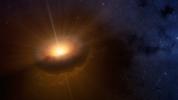
|
-
PIA20700:
-
The Loneliest Young Star (Artist's Concept)
Full Resolution:
TIFF
(22.69 MB)
JPEG
(373.6 kB)
|

|
2014-08-21 |
|
Chandra X-ray Observatory
Spitzer Space Telescope
XMM-Newton
|
MIPS
XMM-Newton X-ray
|
2051x1591x3 |
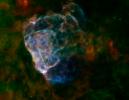
|
-
PIA18468:
-
Supernova Seen In Two Lights
Full Resolution:
TIFF
(9.794 MB)
JPEG
(189.6 kB)
|

|
2014-10-22 |
|
Chandra X-ray Observatory
Wide-field Infrared Survey Explorer (WISE)
|
|
3600x3600x3 |
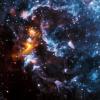
|
-
PIA18848:
-
Face Illusion in the Cosmic Clouds
Full Resolution:
TIFF
(38.89 MB)
JPEG
(573.6 kB)
|

 Planetary Data System
Planetary Data System
















































































![The images indicate that the bubble of gas that makes up the supernova remnant appears different in various types of light. Chandra reveals the hottest gas [colored blue and colored green], which radiates in X-rays.](/thumb/PIA06908.jpg)


































